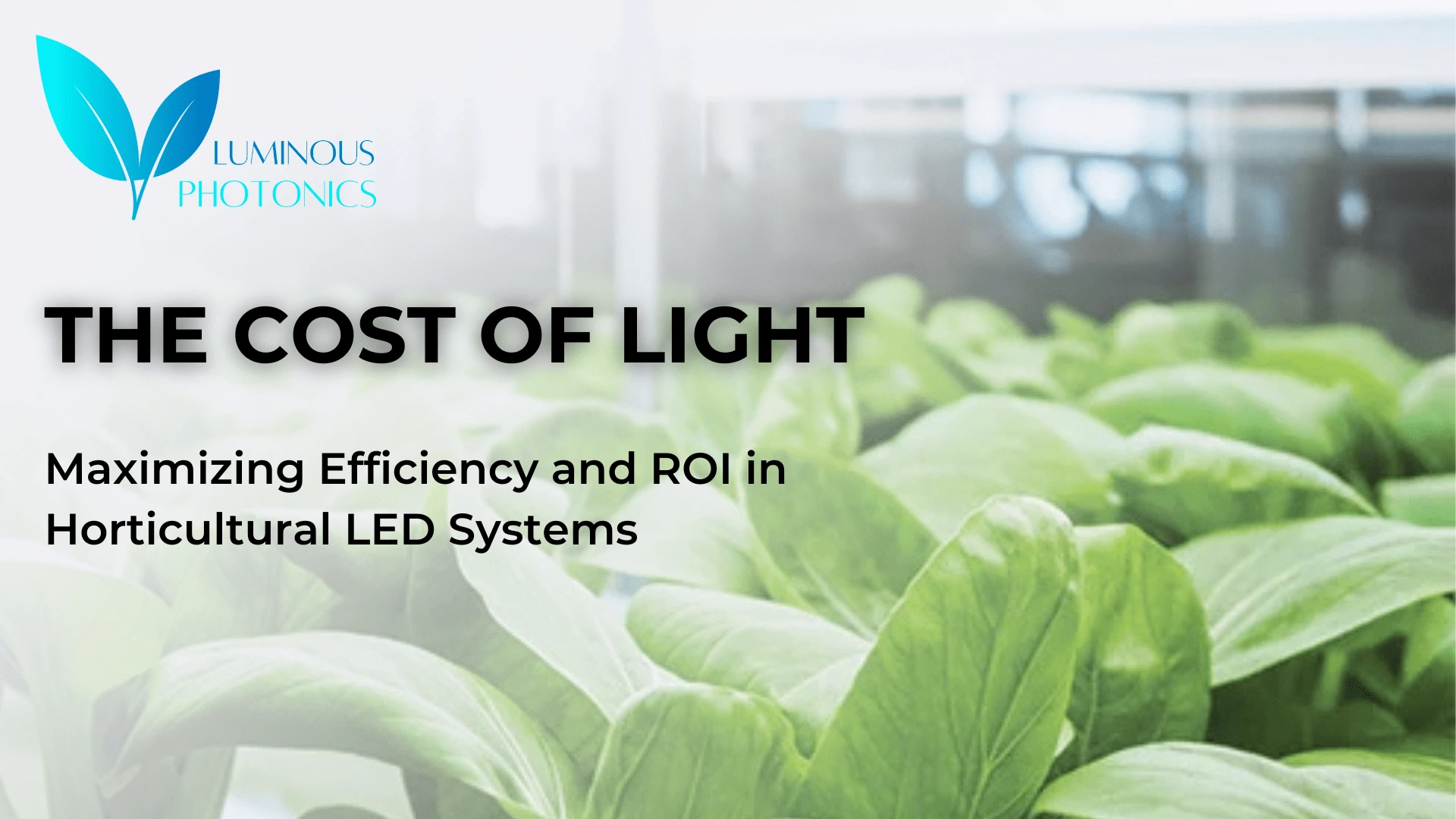The Cost of Light: Maximizing Efficiency and ROI in Horticultural LED Systems
In modern horticulture, lighting isn’t just about growing better plants—it’s about managing costs and maximizing efficiency. With the shift toward LED lighting in controlled environment agriculture (CEA), understanding the economic impact of lighting systems is crucial for growers looking to optimize investments, reduce energy waste, and improve overall profitability.
Why Lighting Economics Matter in Horticulture
Lighting is one of the most significant operating costs in indoor farming and greenhouse operations. The right system can mean the difference between high yields with efficient energy use and excessive electricity bills that cut into profits. The key factors affecting the economics of horticultural lighting include:
- Initial Investment Costs
- Energy Consumption and Efficiency
- Longevity and Maintenance
Crop Yield and Revenue Impact
Breaking Down the Costs of LED Lighting
While LED technology has revolutionized horticultural lighting, many growers still struggle with understanding the long-term return on investment (ROI). Let’s analyze the key cost factors:
1. Initial Investment: LED vs. Traditional Lighting
- LED fixtures typically have higher upfront costs than traditional HPS (high-pressure sodium) or fluorescent systems.
- However, LEDs last significantly longer, often exceeding 50,000 hours compared to HPS bulbs that require frequent replacements.
- Advanced LED systems with smart controls may require additional investments but deliver long-term savings through automation and optimization.
2. Energy Efficiency and Consumption
- LEDs consume up to 60% less energy than HPS fixtures while delivering equivalent or superior Photosynthetic Photon Flux Density (PPFD).
- Directional lighting and spectrum tuning reduce wasted light energy, allowing plants to receive only what they need.
- Some AI-driven lighting systems adjust brightness and spectrum dynamically, cutting unnecessary power usage.
3. Maintenance and Longevity
- Lower maintenance costs make LEDs more cost-effective over time.
- HPS bulbs degrade faster, requiring replacement every 10,000–15,000 hours.
- Fewer replacements and lower cooling requirements translate to lower labor and operational costs.
4. Crop Yield and Revenue Impact
- Higher PPFD uniformity from LEDs leads to more consistent plant growth, improving overall crop quality and increasing market value.
- Dynamic spectrum tuning allows for precise light adjustments, enhancing growth phases and leading to shorter cultivation cycles.
- The ability to scale production efficiently with optimized lighting results in higher profits per square meter.
Understanding the Long-Term ROI of LEDs
Industry data and grower experiences indicate that switching to LED lighting can lead to substantial cost savings over time. Many operations report:
- Significant reductions in energy costs compared to traditional lighting systems.
- More uniform and higher-quality crop yields due to better PPFD distribution.
A return on investment within 2–3 years, depending on the scale of the operation and energy prices.
While upfront costs may be higher, lower operating expenses and increased revenue make LEDs a smart long-term investment.
Maximizing Cost Savings with Smart Lighting Strategies
To get the most out of an LED lighting investment, growers can implement the following strategies:
- Use AI-Powered Optimization – Smart lighting systems dynamically adjust intensity and spectrum based on real-time plant needs.
- Leverage Rebates and Incentives – Many regions offer government rebates for energy-efficient agricultural lighting.
- Integrate Sensors and Automation – Automated lighting controls ensure consistent PPFD without unnecessary energy waste.
- Choose High-Quality Fixtures – Investing in reliable, high-efficiency LED systems reduces long-term maintenance costs.
Monitor and Adapt – Regularly analyzing light efficiency, plant response, and cost savings ensures continuous improvement.
The Future of Cost-Effective Horticultural Lighting
As technology advances, AI-driven lighting systems and energy-efficient LEDs will further improve cost savings. Innovations in wireless sensors, automated controls, and dynamic light adjustments will help growers reduce expenses while increasing yields.
Conclusion
Lighting costs can make or break an indoor farming operation, but strategic LED investments can significantly improve efficiency, reduce energy waste, and boost profits. By understanding the economics of horticultural lighting, growers can make smarter decisions that lead to sustainable, high-yield operations.
